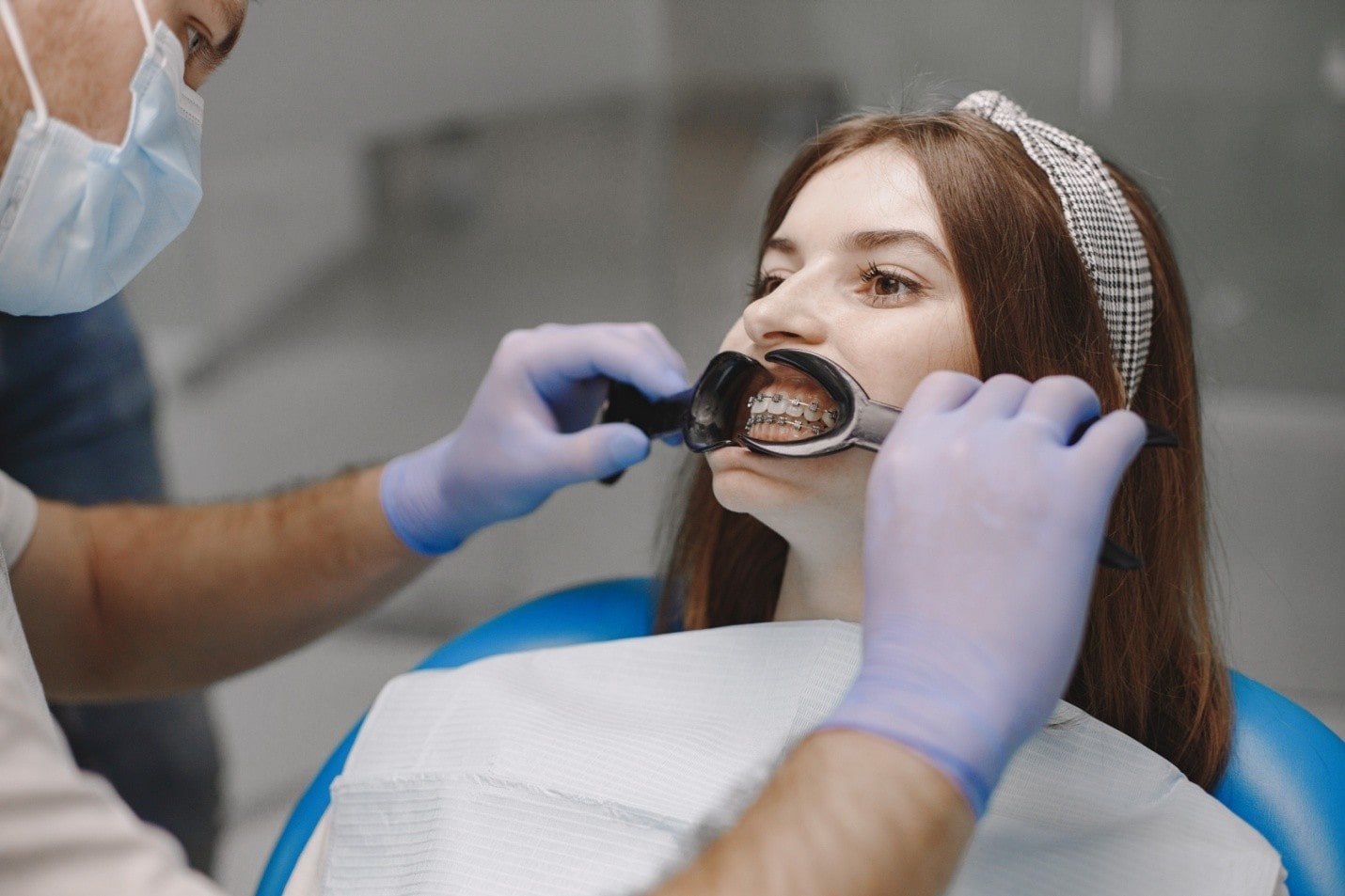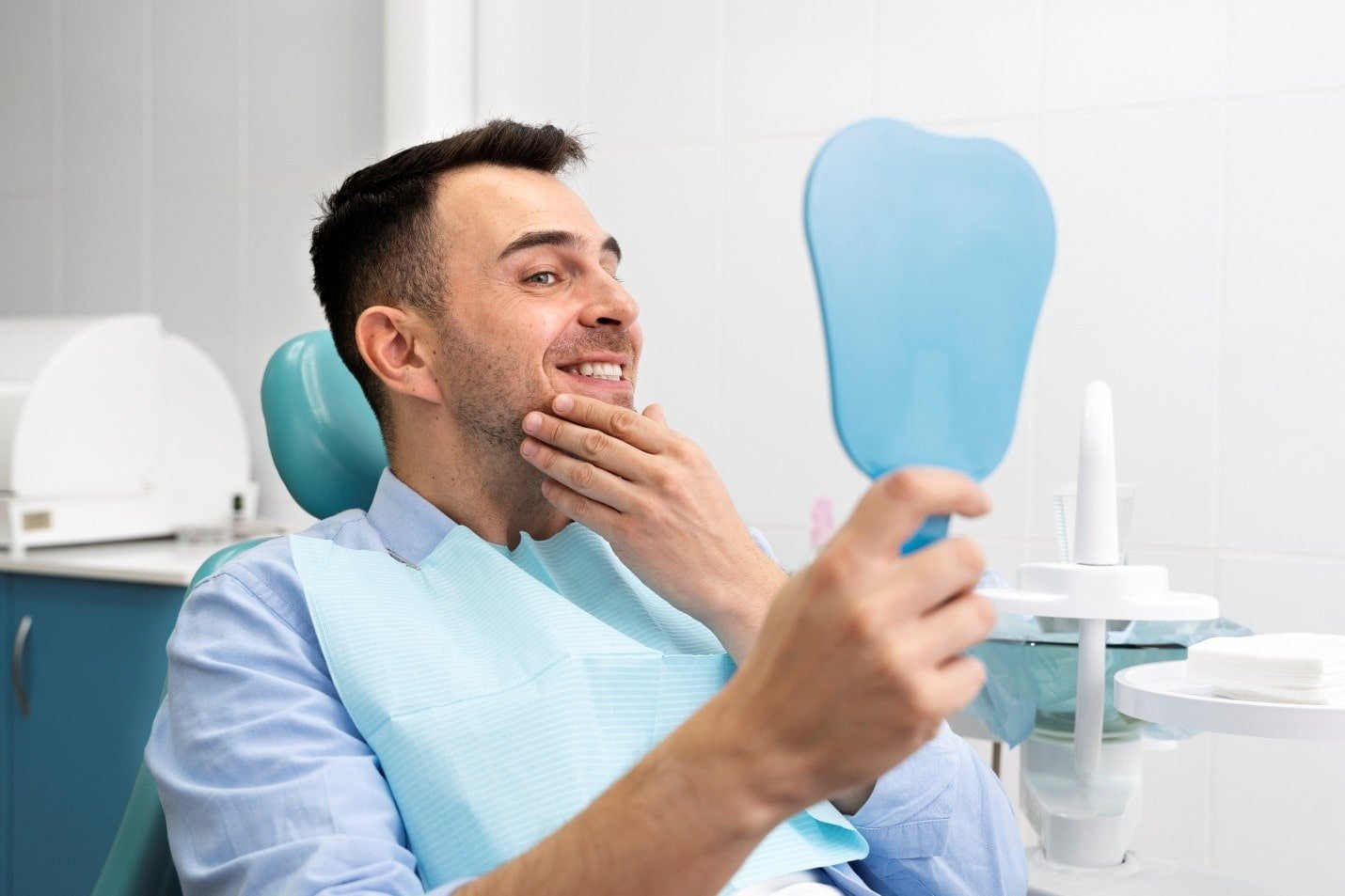Why Teeth Straightening Is Important for Oral Health and Confidence
A beautiful smile is often associated with confidence and positive first impressions. However, the benefits of teeth straightening go far beyond aesthetics. Misaligned teeth are not just a cosmetic concern; they can significantly impact oral health and even overall well-being. Crowded, overlapping, or widely spaced teeth can make it difficult to clean properly, increase the risk of gum disease, and create uneven pressure on the jaw.
Modern dentistry offers safe and effective ways to correct these issues through orthodontic treatments like braces or aligners. Teeth straightening isn’t just about achieving a perfect smile—it’s also about protecting the long-term health of your teeth and gums.
In this blog, we’ll explore why teeth straightening is essential, the health benefits it brings, and how it can boost your self-esteem and confidence.


Understanding Misaligned Teeth (Malocclusion)
Misaligned teeth, also known as malocclusion, occur when the upper and lower teeth do not fit together properly. This can be due to genetic factors, childhood habits, or even early loss of baby teeth. Common types of misalignments include:
- Overcrowding – When there’s not enough space for teeth to grow in properly, causing them to overlap.
- Overbite – The upper front teeth extend too far over the lower front teeth.
- Underbite – The lower front teeth protrude past the upper front teeth.
- Crossbite – Upper teeth sit inside the lower teeth when the mouth is closed.
- Open bite – A gap remains between the upper and lower front teeth even when the mouth is closed.
- Gaps or spacing – Extra space between teeth due to missing teeth or natural growth patterns.
These misalignments aren’t just cosmetic issues—they can affect chewing, speaking, and oral hygiene, leading to more complex dental problems over time.
The Oral Health Benefits of Teeth Straightening
Straightening your teeth provides significant oral health benefits, making it more than just a cosmetic choice. Here’s how properly aligned teeth can protect and improve your oral health:
1. Easier Cleaning and Better Hygiene
Crooked or crowded teeth create tight spaces where food particles and plaque can accumulate. Even with regular brushing and flossing, these areas can be difficult to reach. This buildup can lead to:
- Cavities
- Gum disease
- Bad breath
Straightening teeth makes it easier to maintain good oral hygiene by providing easier access to all tooth surfaces. When your teeth are properly aligned, brushing and flossing become more effective, reducing the risk of decay and gum problems.
2. Lower Risk of Gum Disease
Gum disease, or periodontal disease, is often caused by plaque buildup along the gumline. Misaligned teeth increase the likelihood of plaque accumulation, making you more prone to inflammation and infection.
By straightening your teeth, you can:
- Improve gum health
- Reduce redness and swelling
- Prevent advanced stages of gum disease, which could lead to tooth loss
Healthy gums are the foundation of a strong smile, and alignment plays a key role in keeping them in top condition.
3. Prevention of Uneven Wear and Tear
When teeth don’t align properly, certain teeth may bear more pressure than others while chewing or biting. Over time, this can lead to:
- Excessive enamel wear
- Tooth sensitivity
- Chipped or fractured teeth
Orthodontic treatments help distribute bite forces evenly, protecting your teeth from premature damage and reducing the risk of future dental repairs.
4. Improved Jaw Alignment and Reduced Pain
Misaligned teeth can cause strain on the jaw muscles and joints, potentially leading to temporomandibular joint disorder (TMJ/TMD). Symptoms of this condition may include:
- Jaw pain
- Clicking or popping sounds
- Headaches
- Neck or shoulder pain
By correcting tooth alignment, you can alleviate unnecessary stress on the jaw, improving comfort and reducing chronic pain.
5. Reduced Risk of Dental Injuries
Protruding or crooked teeth are more vulnerable to accidental injuries, especially during sports or physical activities. Straight teeth are less likely to get chipped or knocked out, offering an added layer of protection.
The Confidence Boost of a Straighter Smile
While oral health is the primary benefit of teeth straightening, the emotional and psychological impact should not be underestimated. Your smile plays a major role in how you perceive yourself and how others perceive you.
1. Enhanced Self-Esteem
Many people with misaligned teeth feel self-conscious about their appearance. They may avoid smiling in photos, speaking in public, or engaging in social situations.
Straightening your teeth can:
- Improve self-image
- Increase confidence in professional and personal settings
- Encourage a positive outlook on life
2. Improved Communication
Speech can sometimes be affected by misaligned teeth, especially with certain sounds like “s” or “th.” By correcting alignment, you can improve clarity and feel more confident while communicating.
3. Positive First Impressions
A bright, straight smile often creates a lasting impression. Whether it’s a job interview, business meeting, or social gathering, having a confident smile can open doors to new opportunities.
Common Teeth Straightening Options
Advancements in orthodontics have provided a range of solutions for teeth straightening, catering to different needs and preferences.
1. Traditional Braces
- Metal brackets and wires gradually move teeth into their correct positions.
- Highly effective for severe misalignments.
- Often recommended for younger patients or complex cases.
2. Ceramic Braces
- Similar to traditional braces but with tooth-colored or clear brackets for a less noticeable appearance.
- A popular option for teens and adults who want a subtler look.
3. Clear Aligners
- Removable, transparent trays that gently shift teeth over time.
- Virtually invisible, making them a preferred choice for adults and professionals.
- Easy to clean and maintain since they can be taken out while eating or brushing.
4. Lingual Braces
- Brackets placed on the back (lingual side) of the teeth, hidden from view.
- Effective but may take some time to adjust to.
5. Retainers
- Often used after treatment to maintain the new alignment of teeth.
- Can also be used for minor corrections in some cases.
How Teeth Straightening Improves Overall Health
The benefits of straight teeth extend beyond oral health. Poor dental alignment has been linked to other health issues, including:
- Digestive problems: Misaligned teeth can make chewing inefficient, leading to digestive difficulties.
- Headaches and migraines: Jaw strain caused by misalignment may trigger tension headaches.
- Poor sleep quality: Some bite issues can contribute to sleep disorders such as sleep apnea.
- Increased inflammation: Gum disease caused by crooked teeth can raise inflammation levels throughout the body, affecting overall health.
By investing in teeth straightening, you’re not only improving your smile but also supporting your general well-being.
Maintaining Results After Teeth Straightening
Once your teeth have been straightened, it’s essential to maintain the results with proper care:
- Wear your retainer as instructed by your orthodontist to prevent teeth from shifting back.
- Practice good oral hygiene, including brushing twice daily and flossing.
- Schedule regular dental checkups for professional cleanings and monitoring.
- Avoid bad habits, such as chewing ice or biting nails, which can damage your teeth.
- Protect your smile during sports by wearing a mouthguard.
Myths About Teeth Straightening
There are several misconceptions that often discourage people from seeking treatment. Let’s address some common myths:
-
Myth 1: Teeth straightening is only for
kids and teenagers.
Fact: Adults of any age can benefit from orthodontic treatment, especially with modern options like clear aligners. -
Myth 2: Braces are always
painful.
Fact: While there may be slight discomfort as teeth move, modern techniques are far more comfortable than in the past. -
Myth 3: Straightening teeth is only
about appearance.
Fact: It’s primarily about improving oral health and preventing future dental issues.
When to Consider Teeth Straightening
You may want to consult a dental professional if you experience:
- Difficulty cleaning certain areas of your teeth.
- Frequent gum inflammation or bleeding.
- Speech difficulties caused by misaligned teeth.
- Jaw pain, headaches, or TMJ symptoms.
- Low confidence due to the appearance of your smile.
Early intervention often leads to more effective and quicker results, but it’s never too late to start treatment.
Final Thoughts
Teeth straightening is far more than a cosmetic procedure—it’s an investment in your health, comfort, and confidence. Properly aligned teeth are easier to clean, less prone to damage, and better for gum health. They also contribute to a balanced bite, reducing strain on the jaw and surrounding muscles.
Beyond these physical benefits, a straight smile can transform the way you feel about yourself, giving you the confidence to smile freely, speak clearly, and engage with the world without hesitation. Whether you choose braces, clear aligners, or another orthodontic solution, the results will last a lifetime with proper care.
By addressing misalignment today, you can enjoy a healthier mouth, a brighter smile, and a boost in self-esteem for years to come.

